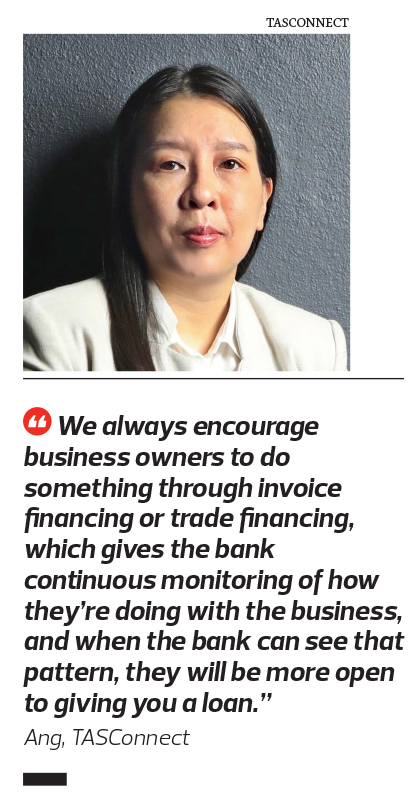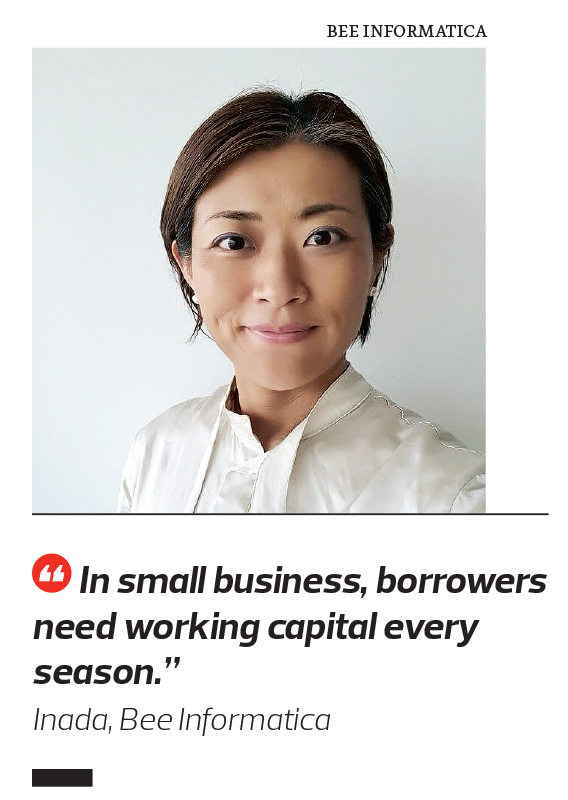
This article first appeared in Digital Edge, The Edge Malaysia Weekly on December 30, 2024 - January 12, 2025
Running a business is never easy. It demands hard work and perseverance. But without opportunities, entrepreneurial dreams often remain unrealised.
For owners of micro, small and medium enterprises (MSMEs) and rural businesses — who make up 96.9% of businesses in the country — the challenges are even greater. Many are stuck in a difficult financial cycle, unable to secure enough capital to sustain operations, often resulting in business closures.
Microloans have emerged as a critical tool to support these businesses, with financial technology (fintech) companies increasingly recognising their potential to provide MSMEs with the working capital needed to survive and grow.
Fintech firms are bridging the funding gap for micro and nano businesses, offering a lifeline where traditional bank loans fall short. Many MSMEs turn to microfinancing because they are ineligible for bank loans, owing to a lack of credit score or financial history. With no records to assess, these businesses are often denied funding.
Banks further complicate access to funding by requiring up to three years of audited financial reports to prove profitability. Moreover, banks focus on larger financing deals, making small microloans impractical for them to process. While a microloan could be a turning point for a small business, banks lack the capacity or interest to cater for such needs.
This is where fintech and microlending companies step in, creating an ecosystem that addresses the funding gap. These companies are better equipped to offer smaller, tailored financial solutions, helping MSMEs stay afloat and thrive.
The ease of adopting technology has also facilitated the digitalisation of businesses, even in rural areas. Engaging with fintech microlending services often requires basic digital literacy, which can encourage business owners to adopt modern trends and improve their operations.
While microlending companies share a common purpose, each operates with its own strategies. For example, TASConnect recently acquired SOLV, a business-to-business (B2B) financing platform, to expand its financial services. The Singapore-based supply chain financing platform caters for businesses across various industries, from large enterprises to small, family-run shops, showcasing its versatile and inclusive approach to microlending.
TASConnect acts as an intermediary, connecting small business owners with financial institutions while serving as a funding source. As a working capital solution and software-as-a-solution platform, it supports customers with microloans and digitalisation assistance.
Accumulating data on TASConnect’s platform helps business owners identify the biggest challenges faced by a business to pinpoint unique issues. This data can also help businesses apply for bank loans in the future by having proof of transactions and financial statements.
“We try to bring this to the funders and lenders because you can’t be very traditional in the way you access now. You need to look at different methods and alternative ways of accessing the important data,” says Wendy Ang, CEO of TASConnect Malaysia.
“We always encourage business owners to do something through invoice financing or trade financing, which gives the bank continuous monitoring of how they’re doing with the business, and when the bank can see that pattern, they will be more open to giving you a loan.”
Microlending companies typically target SMEs and MSMEs, but some focus on more specific communities. MADCash Sdn Bhd, for instance, is a fintech start-up that provides zero-interest funds exclusively for women entrepreneurs willing to take risks.
Recognising the added societal challenges that women face — balancing business ownership with roles such as motherhood — MADCash addresses this disparity by tailoring its microloans specifically for women. The company also supports women in difficult circumstances, offering them a pathway to regain stability and work toward financial independence.
“We are working on a new feature called the Future Bankability Index. Most fintech companies work on the credit scoring model. Credit scoring doesn’t work for us because we take in people who are blacklisted,” says Nuraizah Shamsul Baharin, managing director of MADCash. The index is an alternative to credit scoring to increase MSMEs’ future bankability.
MADCash’s model relies on funding from corporate social responsibility schemes provided by their partner banks, and that money is used to generate cash flow.
For example, if MADCash receives RM250,000 from a bank, RM50,000 will be put into its entrepreneur development programmes, and RM200,000 will be used to fund its micro-lending operations. According to Nuraizah, the RM200,000 in funds are strictly allocated as loans to business owners and are not used by the company itself. Once fully repaid, the loans are returned to the RM200,000 pool, creating a sustainable cycle that allows MADCash to continue lending.
The loan amounts range from RM1,000 to RM5,000, with low-interest rates tailored to its customer base. Nuraizah says the loan cap aligns with the maximum amount eligible for a small claims court, ensuring a manageable and practical lending process.
MADCash is looking for partners that can help it go beyond the maximum loan amount.
Similarly, Bee Informatica Sdn Bhd provides loans for businesses regardless of sector, but focuses on companies that are a little bigger. This creates a market for owners of micro enterprises who are ineligible for bank loans but require a larger amount of money.
Bee Informatica charges an interest rate of 12% per year, along with an additional 12% for processing fees. “It sounds a bit more expensive than banks or other lenders, but as part of the non-banking sector, this 24% is very, very normal because of the size of the loan and coverage of all the costs,” says its co-founder and CEO Fumiko Inada.
After business owners settle their loans, they can continue to apply for microloans from Bee Informatica. Inada says about 60% of the company’s borrowers return for another round of loans, and the main reason for this is the lack of access to bank loans.
“In small business, they need working capital every season. For [certain reasons], they need a regular injection for their working capital, and it happens normally once a year. They also need some cash buffer on hand for any emergency expenses or unexpected events,” she says.
Lessons in finance
Microlending companies often go beyond simply providing loans, offering financial education to ensure the funds are repaid as intended. This helps cultivate a sense of financial literacy among borrowers, empowering them to manage their resources effectively.
Moreover, MSME business owners without prior financial support often risk falling back into the same cycle, even after receiving financial assistance.
Microlending companies must also collect repayments, but if micro businesses fail, recovering the loan becomes unlikely. This makes financial literacy crucial, serving as a preventive measure to ensure loans are repaid.
TASConnect’s Ang says her team actively engages with MSMEs in various sectors, assessing their financial literacy levels. This hands-on approach helps the company identify personalised solutions that can be tailored to its customers’ specific needs.
This approach also helps small business owners who might be opposed to loans to change their mindset and view financial assistance in a positive way.
“We have gone to several mom-and-pop shops, small businesses that have a fear of [borrowing]. To them, lending means some kind of debt. That would be one of the biggest challenges,” says Ang.
MADCash has been proactive in hosting programmes for business owners to grow their businesses. The most recent programme targets women in tech to help navigate the start-up ecosystem.
In fact, most of MADCash’s revenue stream comes from its educational courses. The company also plans to expand its programmes to imbue financial literacy to a wider range of people, and Nuraizah shares future activities with its Golden Academy.
“[The Golden Academy] is for those who are about to retire, to know what to do with yourself, what to do with your money and how to prevent your children from taking it, or protect you from friends who will tell you about a great investment opportunity that will cause you to lose your money within a few months,” she says.
Bee Informatica takes a different approach by providing links to programmes on YouTube to cover financial literacy content as well as help those in rural areas with digital literacy. Inada says these links are also shared with rejected applicants to prepare them in the event that they would like to reapply for a loan.
“All clients need to know and match with their requirements. The loan size and their cash flow should be matched, but they also need literacy. It will be better to have an opportunity for them to know the logic of [how we work]. Then, they can prepare next time,” she says.
Save by subscribing to us for your print and/or digital copy.
P/S: The Edge is also available on Apple's App Store and Android's Google Play.
- Asia stocks, oil prices plunge; markets hunger for rapid US rate cuts
- FBM KLCI down 4.17% to more than two-year low on global trade war woes
- Trump team rejects market fears, shows defiance on tariffs
- Malaysia should not panic, rush into decisions over US tariffs, says Amir Hamzah
- S&P 500 futures slump as tariff turmoil deepens
- Poh Huat dips to 32-month low as analysts flag earnings risk from US reciprocal tariffs
- China has already trade-war-proofed its economy
- LG Energy Solution flags 138% rise in 1Q operating profit
- Oil plunge deepens on fears global trade war could trigger recession
- TikTok deal stalled by China’s objections to tariffs, Trump says



